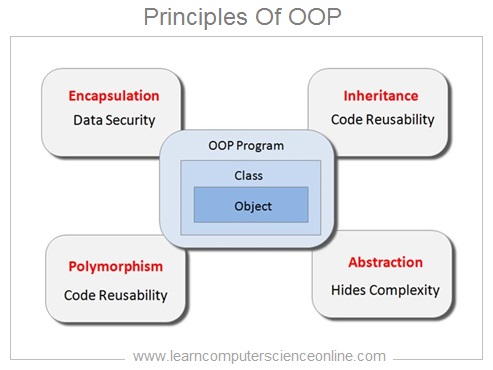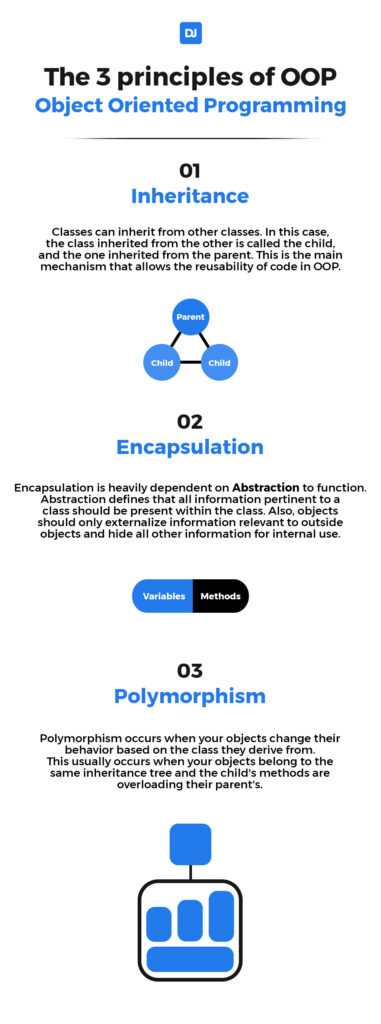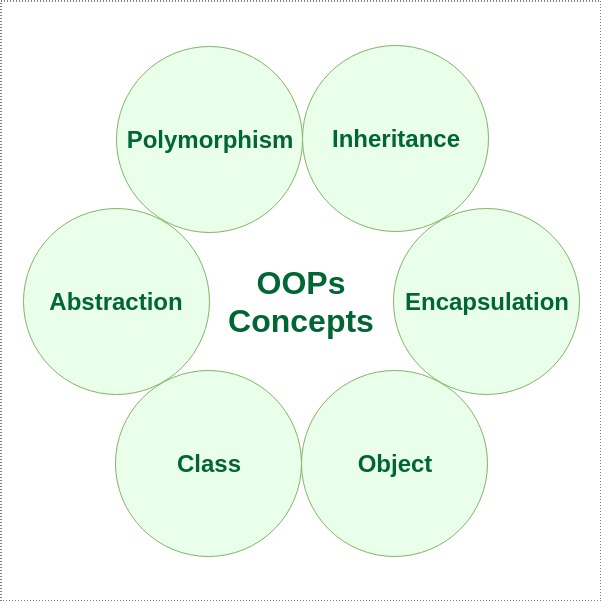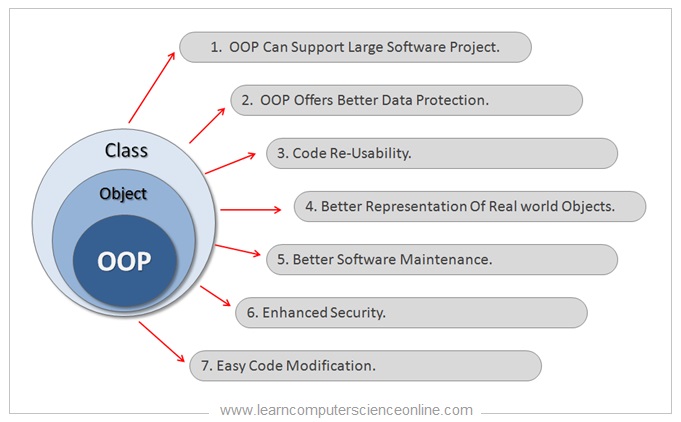
Introduction
What is Object-Oriented Programming (OOP)?
Object-Oriented Programming (OOP) is a programming paradigm centered around the concept of “objects,” which can contain data and code that manipulates that data. This approach allows developers to create more structured and reusable code. Examples of OOP languages include Java, C++, and Python, each providing unique features that harness the power of OOP.
Importance of Learning OOP Principles
Understanding Object-Oriented Programming principles is crucial for several reasons:
- Enhanced Code Organization: OOP encourages a clean structure, making code easier to maintain.
- Efficient Collaboration: Teams can collaborate effectively, as code can be broken down into manageable objects.
- Future-Proofing: With OOP mastery, developers are better prepared for advancements in software development.
Embracing OOP not only improves current coding practices but also paves the way for career growth in technology.

Fundamental Principles of OOP
Encapsulation
Encapsulation is all about bundling the data (attributes) and methods (functions) that operate on that data within a single unit or class. It restricts access to some of the object’s components, enabling data hiding and enhancing security. For instance, when creating a class for a bank account, you can keep the balance private and only allow access through public methods.
Inheritance
Inheritance allows a new class to inherit attributes and methods from an existing class. This enhances reusability and reduces redundancy. For instance, if you have a class called Animal, a Dog class can inherit from it, gaining shared features while also having its unique characteristics.
Polymorphism
Polymorphism lets a single interface represent different underlying forms or data types. This principle means that a method can perform different tasks based on the object that it is acting upon. For example, a method named makeSound() might produce a bark when called from a Dog object and a meow from a Cat object.
Abstraction
Abstraction simplifies complex reality by modeling classes based only on the essential properties and behaviors. It allows programmers to focus on what an object does instead of how it does it, streamlining their coding process. In a car class, for instance, using methods like drive() and stop() abstracts the complex mechanics occurring beneath.

Benefits of Object-Oriented Programming
Reusability of Code
One of the standout benefits of Object-Oriented Programming (OOP) is its emphasis on code reusability. By creating classes that can be reused across different projects, developers can save time and effort. For instance, a User class developed for one application can be applied to another, minimizing duplication.
Modularity and Flexibility
OOP promotes modularity by allowing developers to break down software into discrete, manageable components. This means that changes can be made to one part of the system without affecting the entire application. Imagine updating an e-commerce platform’s payment module without disrupting the user interface—this is the flexibility OOP provides.
Encapsulation for Data Security
Encapsulation strengthens data security by restricting access to sensitive information. For example, securing a user’s password within a class ensures it cannot be altered directly, reducing the risk of data breaches.
Improved Code Organization
With OOP, code is neatly organized, making it easier to navigate and comprehend. Developers can create clean and structured codebases that enhance productivity. This organized approach not only aids in immediate development but simplifies future updates and debugging, providing long-term efficiency.

Common OOP Languages and Frameworks
Java
Java is one of the most popular Object-Oriented Programming languages, known for its “write once, run anywhere” capability. Its rich API and extensive libraries make it ideal for building web applications, Android apps, and enterprise software solutions.
C++
C++ builds on the foundation of C by introducing OOP principles. It offers a balance of high-level abstraction and low-level control, making it suited for systems programming and game development. Many developers appreciate its performance and versatility.
Python
Python has gained immense popularity due to its simplicity and readability. With support for classes and inheritance, it allows for rapid development, ideal for data analysis and web applications. Developers love how quickly they can implement OOP concepts.
.NET
The .NET framework, primarily associated with C#, supports OOP principles effectively. It provides a vast ecosystem of libraries and tools that streamline application development. Many organizations leverage .NET for building scalable and robust applications, especially in enterprise environments.

Design Patterns in Object-Oriented Programming
Singleton
The Singleton pattern ensures that a class has only one instance and provides a global point of access to it. This is particularly useful in scenarios like logging, where having a single logger instance can help manage log outputs consistently across an application.
Factory Method
The Factory Method pattern allows for the creation of objects without specifying the exact class of object that will be created. This promotes loose coupling and enhances flexibility. For example, in a graphics application, a ShapeFactory can instantiate various shapes like circles or squares based on user input without knowing which shape will be created in advance.
Observer
The Observer pattern establishes a one-to-many relationship between objects, ensuring that when one object changes state, all its dependents are notified and updated automatically. This is commonly seen in user interfaces where changes in data (like temperature readings) immediately reflect on the user interface.
Strategy
The Strategy pattern enables selecting an algorithm’s behavior at runtime. It allows a class to change its behavior by encapsulating various algorithms. For instance, a navigation app can switch between different routing strategies (like shortest path or scenic route) dynamically based on user preferences, enhancing flexibility and usability.

Best Practices in Object-Oriented Programming
Naming Conventions
Using clear and consistent naming conventions is vital in Object-Oriented Programming. Well-named classes, methods, and variables enhance code readability and maintainability. For instance, a UserAccount class is much more descriptive than a generic UA.
Code Reusability
Emphasizing code reusability not only saves time but also reduces the potential for errors. Developers can utilize existing classes and methods in new projects, allowing for efficient workflows. Consider creating libraries of commonly used components.
Avoiding God Objects
A God Object is an anti-pattern that centralizes too much functionality within a single class. This leads to tightly coupled code that is difficult to maintain. Instead, distribute responsibilities across several classes to enhance modularity.
SOLID Principles
The SOLID principles—Single Responsibility, Open/Closed, Liskov Substitution, Interface Segregation, and Dependency Inversion—serve as a framework for developing well-structured, maintainable code. By adhering to these principles, developers can create systems that are easier to adapt and extend over time, significantly improving long-term project health.

Case Studies: Real-World Applications of OOP
Developing Web Applications
Object-Oriented Programming plays a pivotal role in developing web applications. Frameworks like Django (Python) and Ruby on Rails leverage OOP principles to promote clean architecture and reusable components. For example, a blog application can have distinct classes for posts, comments, and users, streamlining development and maintenance.
Creating Video Games
In video game development, OOP is essential for managing complex systems. By defining classes for characters, weapons, and levels, developers can create modular code that is easy to modify. For instance, adding a new character type can be as simple as extending a base Character class.
Implementing Financial Systems
Financial systems also benefit from OOP, allowing for secure and organized code management. By creating classes for transactions, accounts, and users, developers can easily implement features like multi-user authentication and transaction tracking. This structure not only improves data integrity but also enhances system scalability as requirements evolve.

Challenges and Considerations in OOP
Learning Curve
Despite its advantages, Object-Oriented Programming can present a steep learning curve, especially for newcomers. Understanding concepts like inheritance, polymorphism, and design patterns takes time and experience. Beginners may find themselves struggling with the abstraction and complex relationships between objects, which can lead to frustration but ultimately results in greater proficiency.
Overhead in Small Projects
For smaller projects, the overhead of implementing OOP can sometimes outweigh its benefits. Developers may find that the effort involved in structuring classes and modules can slow down development unnecessarily. In simple scripts or prototypes, a more functional approach might suffice.
Performance Concerns
Performance can also be an issue with OOP, particularly due to the added layers of abstraction. Frequent object creation and destruction may lead to memory overhead. Developers need to balance the elegance of their design with the practical needs of performance, ensuring that the application runs efficiently even as it remains organized and maintainable.

Conclusion
Recap of OOP Principles and Benefits
In summary, Object-Oriented Programming offers a robust framework that emphasizes key principles such as encapsulation, inheritance, polymorphism, and abstraction. These principles result in numerous benefits, including:
- Code Reusability: Reduce redundancy and enhance development speed.
- Improved Code Organization: Make large codebases manageable.
- Encapsulation: Secure sensitive data and promote data integrity.
These benefits make OOP an invaluable approach in modern software development.
Continuing the Journey in Object-Oriented Programming
As technology evolves, so too does the need for continuous learning in Object-Oriented Programming. Engaging with real-world projects, exploring new frameworks, and participating in online communities can help developers sharpen their skills. Remember, the journey in OOP is ongoing, and every project offers a new chance to refine one’s understanding and expertise.

